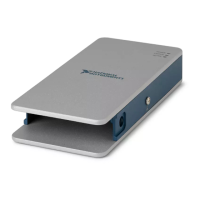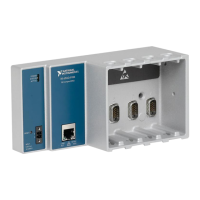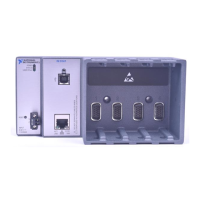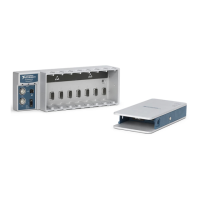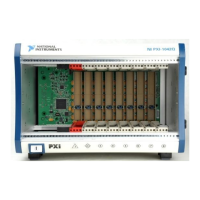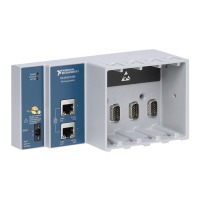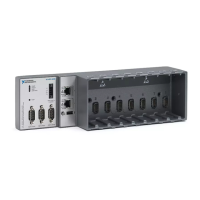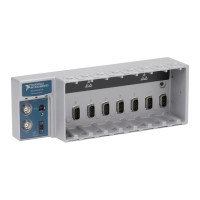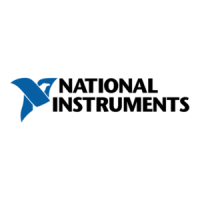© National Instruments | 5-17
NI cDAQ-9171/9174/9178 User Manual
disadvantages of a sample clocked frequency measurement is that the frequency to be measured
must be at least twice the sample clock rate to ensure that a full period of the frequency to be
measured occurs between sample clocks.
• Low frequency measurements with one counter is a good method for many applications.
However, the accuracy of the measurement decreases as the frequency increases.
• High frequency measurements with two counters is accurate for high frequency signals.
However, the accuracy decreases as the frequency of the signal to measure decreases. At
very low frequencies, this method may be too inaccurate for your application. Another
disadvantage of this method is that it requires two counters (if you cannot provide an
external signal of known width). An advantage of high frequency measurements with
two counters is that the measurement completes in a known amount of time.
• Measuring a large range of frequencies with two counters measures high and low frequency
signals accurately. However, it requires two counters, and it has a variable sample time and
variable error % dependent on the input signal.
Table 5-5 summarizes some of the differences in methods of measuring frequency.
For information about connecting counter signals, refer to the Default Counter/Timer Routing
section.
Table 5-5. Frequency Measurement Method Comparison
Method
Number of
Counters
Used
Number of
Measurements
Returned
Measures
High
Frequency
Signals
Accurately
Measures
Low
Frequency
Signals
Accurately
Low frequency with
one counter
1 1 Poor Good
High frequency with
two counters
1 or 2 1 Good Poor
Large range of
frequencies with
two counters
2 1 Good Good
Sample clocked
(averaged)
1 1 Good Good
Artisan Technology Group - Quality Instrumentation ... Guaranteed | (888) 88-SOURCE | www.artisantg.com
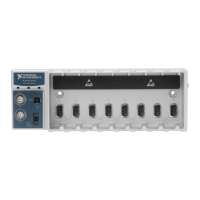
